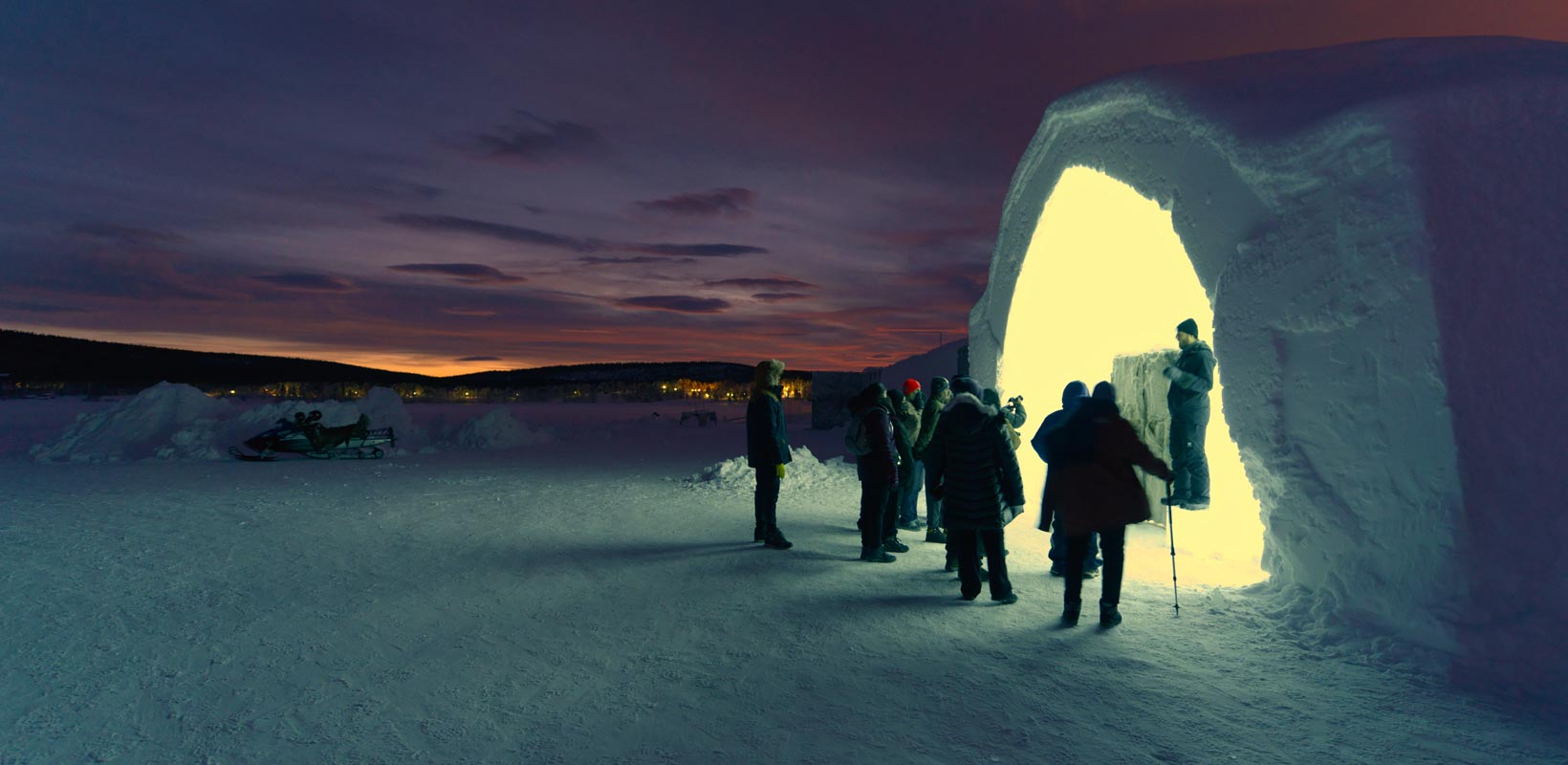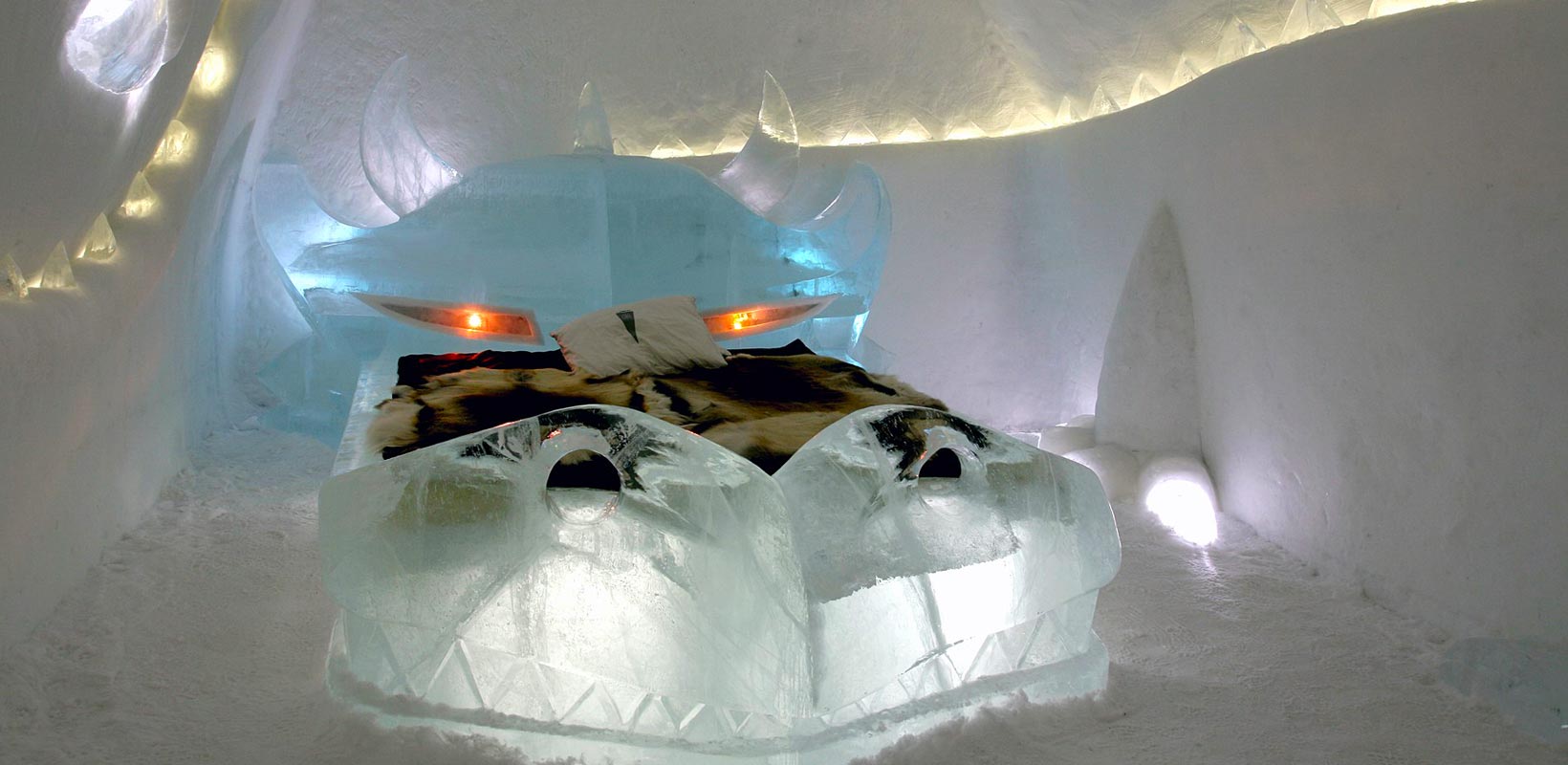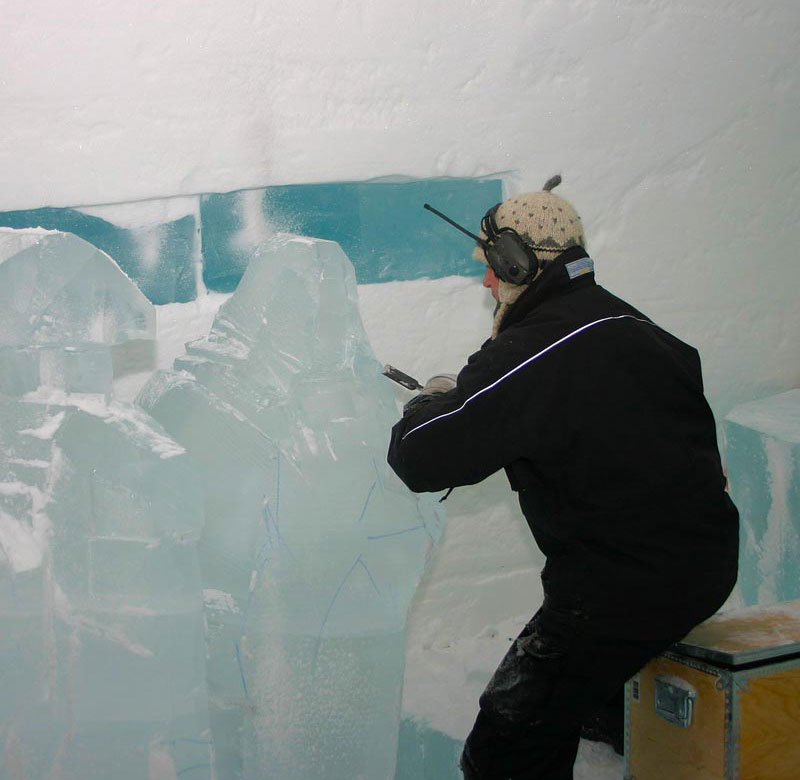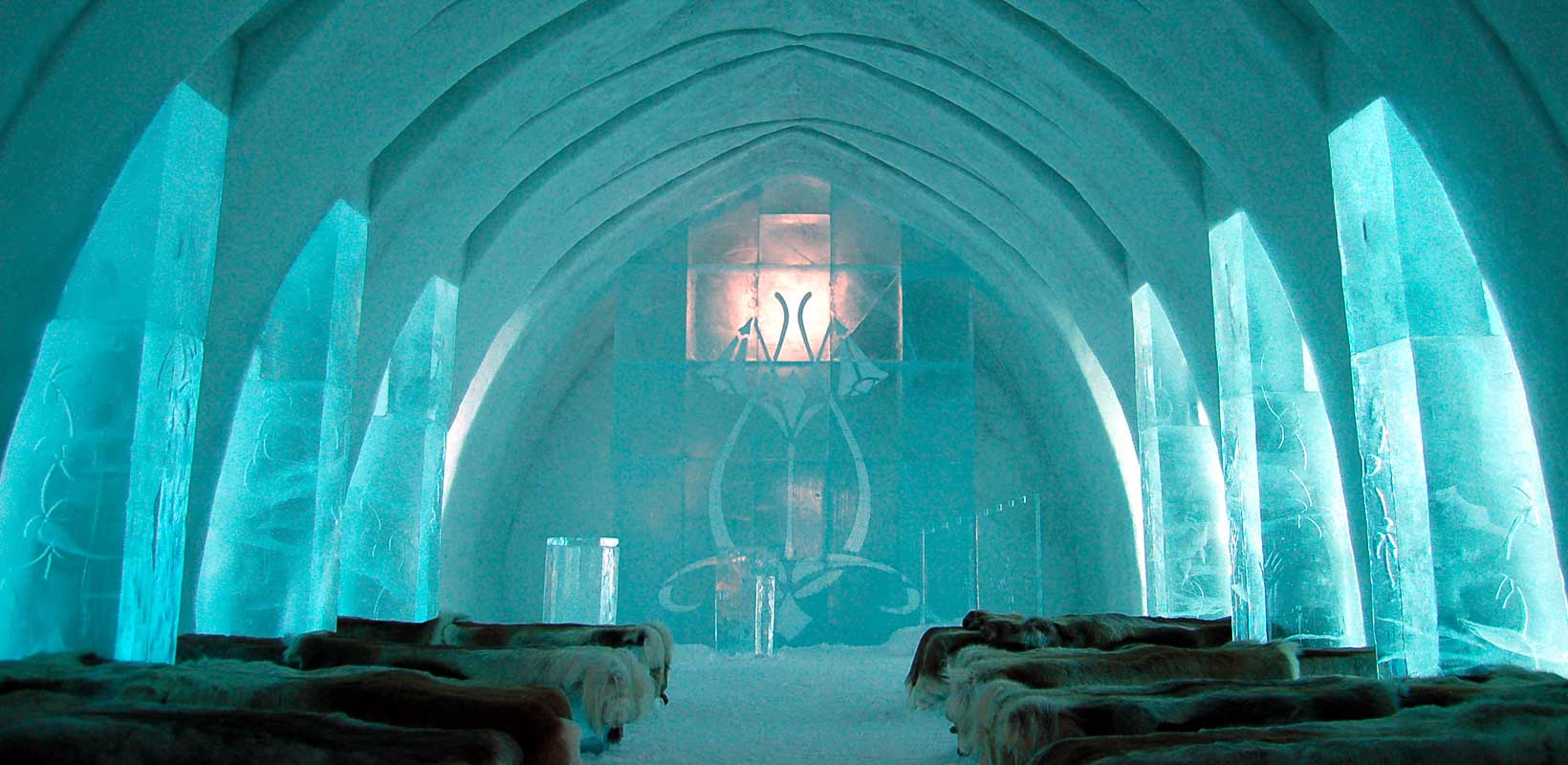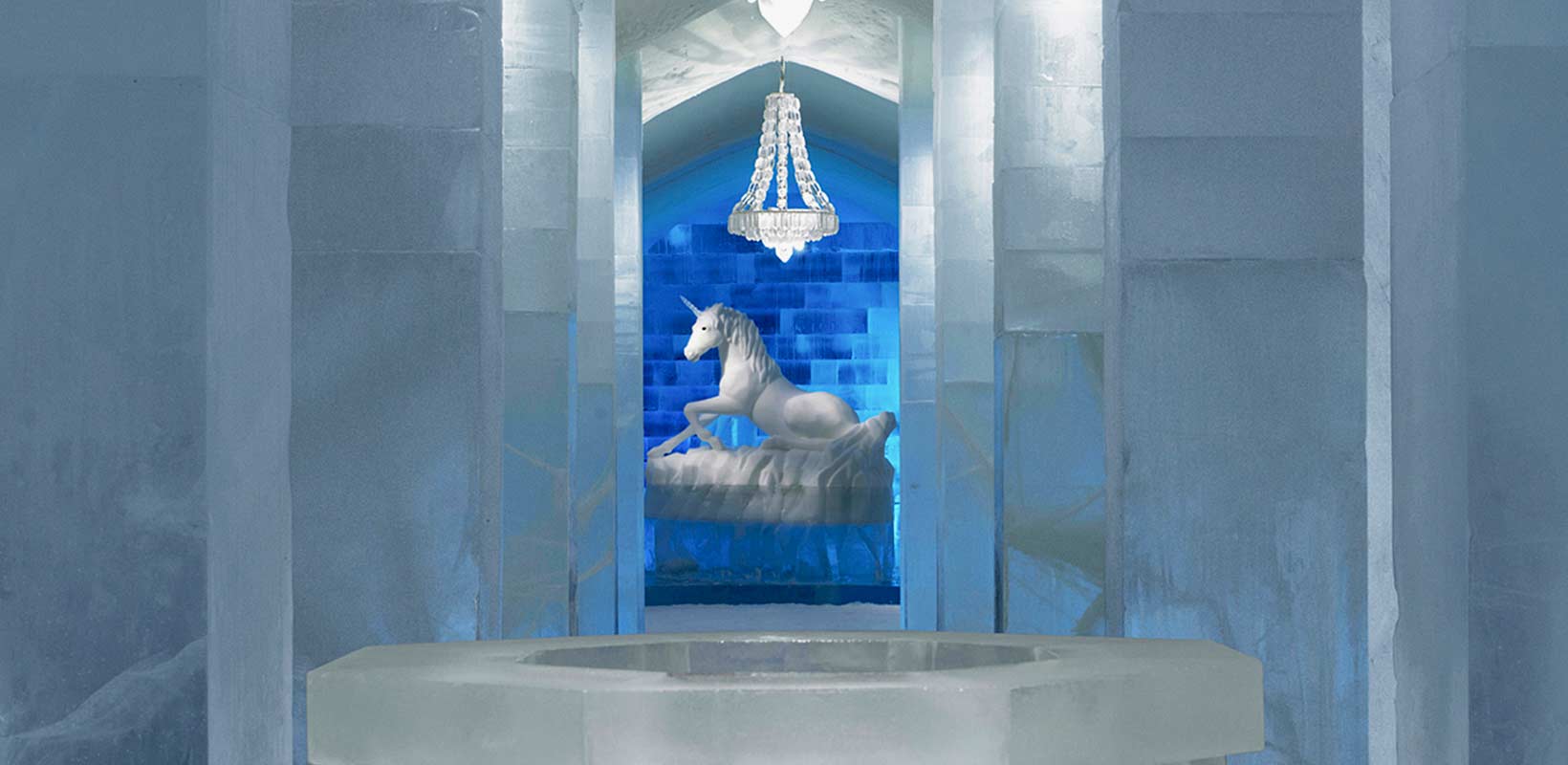There are many popular destinations in the Scandinavian Arctic, including the Ice Hotel in Jukkasjarvi, in Northern Sweden. Every winter a hotel is carved from snow and blocks of frozen water from the River Torne.
The Ice Hotel is constructed on the shoreline of the river. The room temperature is between -5 degrees C and -8 degrees C. Outside it’s -20. Reindeer skins and sleeping bags suitable for sub-zero temperatures keep guests warm. This unusual resort opens it’s doors every January to visitors. Then in April when the temperature rises it simply melts away.
The Ice Hotel uses local and natural resources and is also one of the major providers of employment in the region.
Sofi Ruotsalainen – ice artist
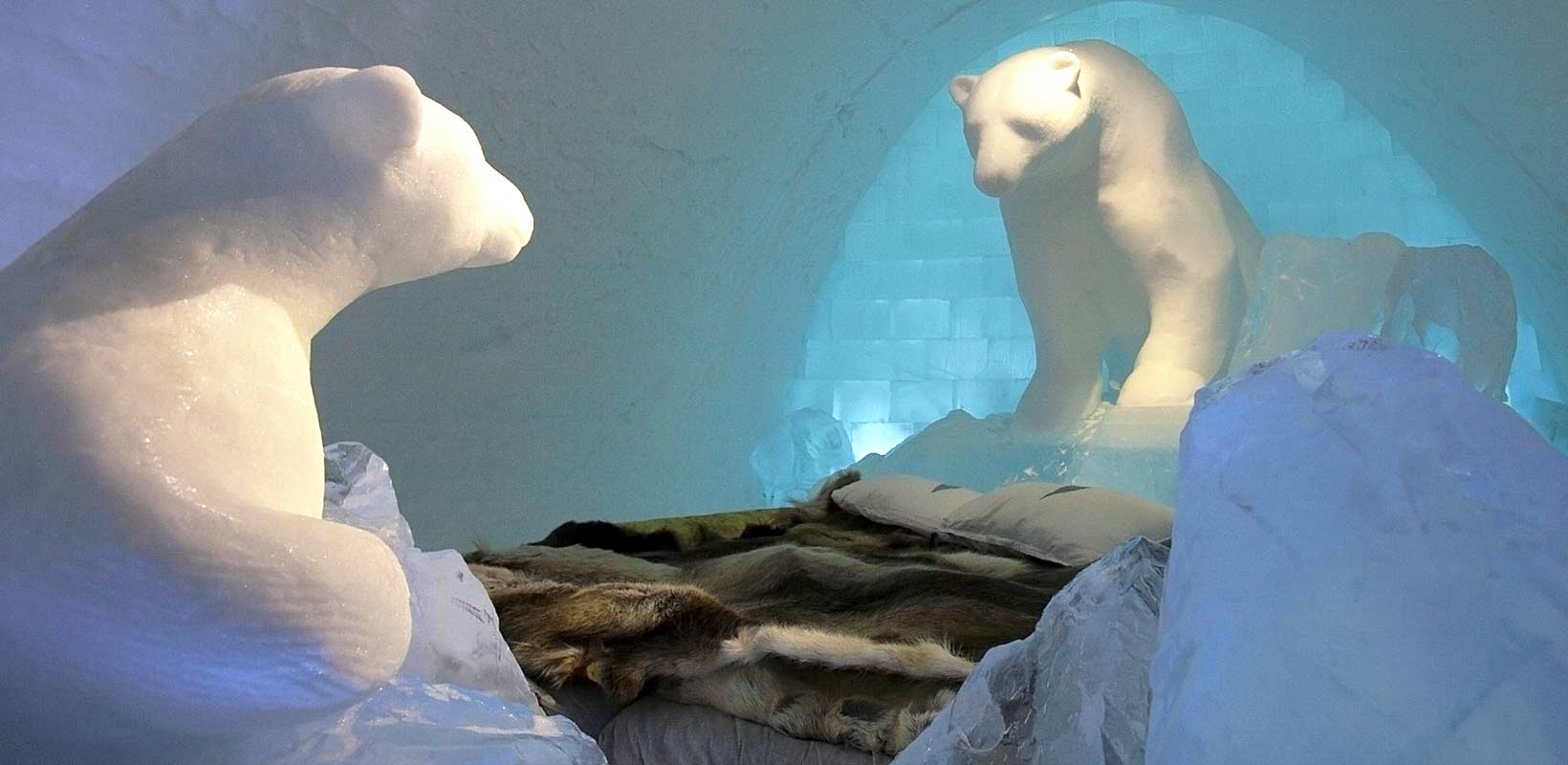
Hello, my name is Sofi, and I am an ice artist at the Ice Hotel in Jukkasjarvi, up in the Arctic in the North of Sweden. I mostly work with art and design, so I make the interior and sculptures inside. Each room in the hotel, where you sleep and even the church are made from ice and snow.
All the ice for the Ice Hotel we harvest from the Torne River, its sweet water and clear – a little bit creamy – so the ice will be very thick and transparent. In the late spring, we harvest big blocks of two metres, and we store it through the warm period for the next year. When you work with it you work with a chainsaw, and it’s very soft, it’s not hard at all, it’s soft with very sharp tools.
I totally love working with ice because first of all it is our material from up here and it gives me the possibility to be out working during the cold winter. The sculpturing material is soft, and it will disappear, so your mind totally explodes with ideas because you’re not afraid to not succeed with the things, you can always take new pieces!
- Scroll through some images of the ice hotel.
Student activity
- Write a postcard or letter home to describe what it is like to stay at the ice hotel. Use the useful links below to help. Visit the ice hotel website to find out more.
- What do you think happens to the hotel business in the summertime?
- Would you consider the Ice Hotel eco-friendly? Is it sustainable tourism?
Ecotourism: fad or fact?
Ecotourism is possibly a way forward for travel in the Arctic – it’s estimated that it’s growing three times as fast as tourism overall…
The International Ecotourism Society, (TIES 2006)
What is eco-tourism?
- small scale
- small group operators
- nature based
- contributes to nature conservation
- provides nature interpretation
- based in the community
- actively involved in the community
- benefits the community
- more tourism revenues for local people
- increases awareness
- respects rights and cultures of local people
Ecotourism is possibly a way forward for travel in the Arctic – it is estimated that it’s growing three times as fast as tourism overall…
The International Ecotourism Society, (TIES 2006)
Sustainable tourism
What is sustainable tourism?
Here is one definition:
…meets the needs of present tourist and host regions while protecting and enhancing opportunities for the future. It is envisaged as leading to management of all resources in such a way that economic, social and aesthetic needs can be fulfilled while maintaining the cultural integrity, essential ecological processes, and biological diversity and life support systems. Sustainable tourism products are products, which are operated in harmony with the local environment, community and cultures so that these become the beneficiaries not the victims of tourism development.
World Travel and Tourism Council et al, 2001. Source: Sustainable Model for Arctic Regional Tourism (SMART) final project report
- How do you think sustainable tourism is different to eco-tourism?
Sustainable tourism requires effort and commitment from the tourist industry and the local community. If destinations are unplanned or become over-exploited and too commercialised, tourists will stop going, and this could have lasting effects not only on business but on the location and the people who live there.
The tourist industry is a business and needs to be economically successful. Tourists expectations must be satisfied. However, at the same time, the culture and wildlife of the region must be maintained and protected. There are a variety of different cruising holidays in the Arctic, with different size vessels, – which have contrasting impacts on the environment.
The Arctic’s unique environment and wildlife have sustained indigenous cultures for centuries
Tourism has a direct impact on the landscape and lifestyle of the local area, creating infrastructures to sustain visitors, such as accommodation, transport, services and activities.
The region is sparsely populated and in some areas there are poor transport connections and communications.
It is vital to involve local communities in the development of Arctic tourism, so there are direct economic and social benefits for the people who live there, and protection for the fragile environment. This is a conundrum, as climate change is also affecting the region. For some communities, this will effect their traditional grazing and hunting grounds, and the incomes derived from these activities. Other sources of employment will be needed.
SMART Travel
In an effort to lessen the negative impacts of mass tourism, organisations are developing guidelines for tourism in the Arctic. In 2000, the Arctic Council and the Northern Forum set up a joint project called the Sustainable Model for Arctic Regional Tourism (SMART) to assist the Arctic tourist industry, as it developed in the region.
They created six principles for Sustainable Arctic Tourism:
- Supports the local economy
- Operates environmentally friendly
- Supports the conservation of local nature
- Respects and involves the local community
- Ensures quality and safety in all business operations
- Educates visitors about local nature and culture
from Sustainable Model for Arctic Regional Tourism (SMART) -project (2003)
In 2005 The Sustainable Arctic Tourism Association (SATA) ‘was established to continue the development and promotion of sustainable tourism in the Arctic’ and to provide a forum for the industry and other stakeholders to share their experience. There are plans to establish a benchmark label for tour operators in the Arctic. In Sweden, there is an ecotourism label called Nature’s Best, and this model has been introduced in several Arctic Rim countries.
